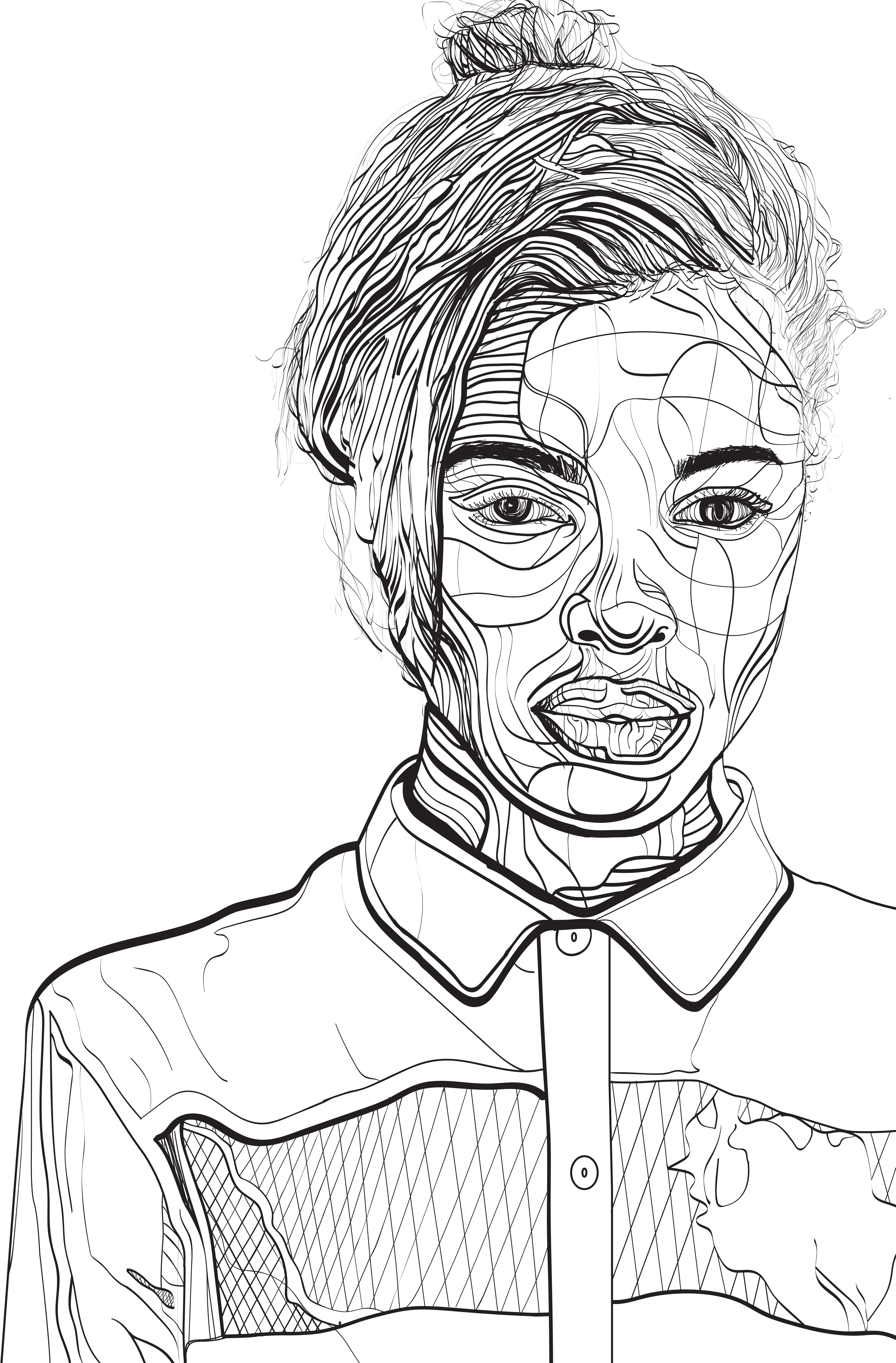
Define the brow bone by extending the nose bridge past the eyelids. A focused and intense look will be highly impactful. Draw the Eyes. The eyes are the most expressive part of the human face.Lining up the features by imaging them wrapped around the cylinder results in a more natural look than a flat design. The top of the eyebrow and bottom of the nose should be positioned so that they can be lined up with the ear. You can imagine that the features are wrapped around a cylinder to have a natural curve. This will help you to avoid a weird final design. Focus to Line Up the Features. Always focus on keeping the eyes, nose, and mouth on the same plane of the face.This would also help you to locate the eyebrows and the eye sockets. Now draw two other triangles for the eyes, with their tip pointing inwards towards the triangle’s tip drawn for the nose. From the center intersection, draw an isosceles triangle and mark out where you want to keep the mouth. This will tell you where the eyes and cheekbones will rest. Drawing Construction Lines on the Face. Draw two lines from either side of the circle.You can go for more squashed circles for a broader and chubby face, while you can use more elongated circles for a longer head shape. You can also experiment with different size circles to result in different head dimensions. From there, draw a vertical line down the circle, which will provide the human head’s basis. The intersection point of these circles will determine the position of the eye. Begin with Two Circles Start by making two overlapping circles.Finished pieces can be mounted on a piece of black construction paper with glue sticks, or staples.Suggest bright colors to create a cartoon or Andy Warhol-like effect. After creating the line drawing, use the oil pastels to color in the face in an unusual way.Retrace the pencil line with a black Sharpie.Remember to add glasses, earrings, and anything else unique to their own face.Suggest that they start from one side of the face, or the top or bottom, and continue around the entire face including the eyes, nose, and mouth.Students should hold their mirrors or set them flat on the table and look only at their image while they draw their face without lifting the pencil off the paper.When the students are finished, they can take a piece of watercolor paper, two pieces of masking tape, and a mirror from the front table.Remind them to draw in their knuckles, rings, etc.

Guided Practice: Have the students hold up their hand, take their pencil in the other and have them look only at their hand while they draw what it looks like, without looking at the paper or lifting their pencil off the page.Notice how the wire starts at the chin and continuously winds around the shape of the face including the ears to the bottom of the chin. The artist, Alexander Calder, created Contour Line drawings of faces and circus animals using pen and paper and also wire.They are created by looking only at the subject and not the paper while drawing.Blind Contour Drawings are created with one line never picking the pencil up off the page.


Straight lines look flat but curved lines give more dimension.

Students can share oil pastels placed in small bowls set at the tables.Tape down the practice paper on the tables.Each student will receive a piece of white construction paper (to be used for drawing practice), a mirror, a pencil, and a sharpie.White construction paper cut into half sheets.


 0 kommentar(er)
0 kommentar(er)
